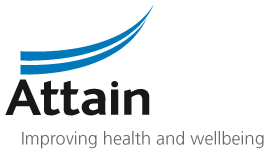When we think of ‘agile working’ we often don’t immediately associate it with the NHS. Over the last few years, the concept did make several appearances in Matt Hancock’s speeches, it is also present in NHS England’s People Plan and is frequently referenced in NHS Digital’s transformation blogs. In fact, many recently developed national services have used agile project management as their primary delivery approach.
However, the last few months have really demonstrated how agile the NHS really can be when faced with a crisis. The impressive speed and efficacy the NHS showed when responding to the difficulties brought by COVID-19 has shown the possibilities available to the system, with the current epidemic widening the window of opportunity for the NHS to embrace new ways of working.
Is agile relevant for you?
If you have asked yourself some of the questions below then agile has some interesting lessons for you.
When considering the care or service you deliver:
- How can we really design care around patient needs?
- How can we be responsive to changing demands?
When considering the way you work to deliver your service:
- How can we create ownership in teams?
- How can we move away from a blame culture to one of collaboration and shared responsibility?
- How can we reduce the fear of failing so that it does not hinder our capacity for change?
- How can we learn from failure instead of burying it?
What is agile?
Agile is an approach to project management where solutions evolve through the collaborative effort of self-organising, multidisciplinary teams and their customers or end users.
How is it different?
The NHS usually delivers projects using the ‘waterfall’ method, which starts off with a thorough planning period where the different activities which will be undertaken are laid out in a linear flow under specific timelines (often presented as a GANTT chart). This gives a nice visual of how the project will hopefully pan out, but in reality the approach can hinder the team’s capacity to respond to change and the planning period can take so long that the project aims and objectives have evolved. In response to these limitations, agile project management has emerged as an alternative delivery method – one which advocates for a more adaptive approach to planning, as well as focusing on early delivery, continual improvement and a rapid and flexible response to change.
1. Achieve value through early delivery to stakeholders
With agile project management, you don’t have to wait until everything is finalised and perfect until you share the work with stakeholders. It promotes the delivery of small bites of information at a time and engages stakeholders in a way that ensures they have helped shape the final product.
2. Welcome changing requirements
It is almost impossible to know from the outset the exact detail of all the solutions that your project will deliver. Environments are continuously changing and so are the needs of stakeholders. By being flexible and responsive to change, your outputs will stay relevant and useful to the end user.
3. Progress is measured by delivering to customers
We often measure progress by the number of tasks that have been completed. However, from the end user’s perspective, progress is measured by the value you have added to their experience.
4. Create a blended delivery team
Agile moves away from the organising of teams by skillset (e.g. analysts, clinicians, managers). It merges in the same team the different skillsets and encourages collaboration. Essentially, to create a highly functioning team, you need to encourage and value the contributions from a range of different expertise.
The agile approach to project management has helped many teams within the NHS to deliver greater value to their patients, even when faced with rapidly changing demands and high-levels of uncertainty. It does require a shift in mindset from the waterfall approach, but there are some valuable lessons which could help us all to increase the impact and relevance of our project outputs.
How do we use agile?
At Attain, we’ve started working in agile when it best suits our clients’ needs. In some projects, this has been our core methodology: where we’ve worked in sprints, developed MVPs, taken a user centred approach. In other projects our use of agile has been softer, based mainly on having regular retrospectives with the client and making sure we remain flexible and adapt rapidly to changing requirements, especially in light of the demands brought by COVID-19. As we continue, to further refine our approach to working with clients, we look forward to extracting the value that methodologies such as agile can offer the NHS, especially in dynamic times such as these.
For more information about the agile working approach, contact us to find out more.

